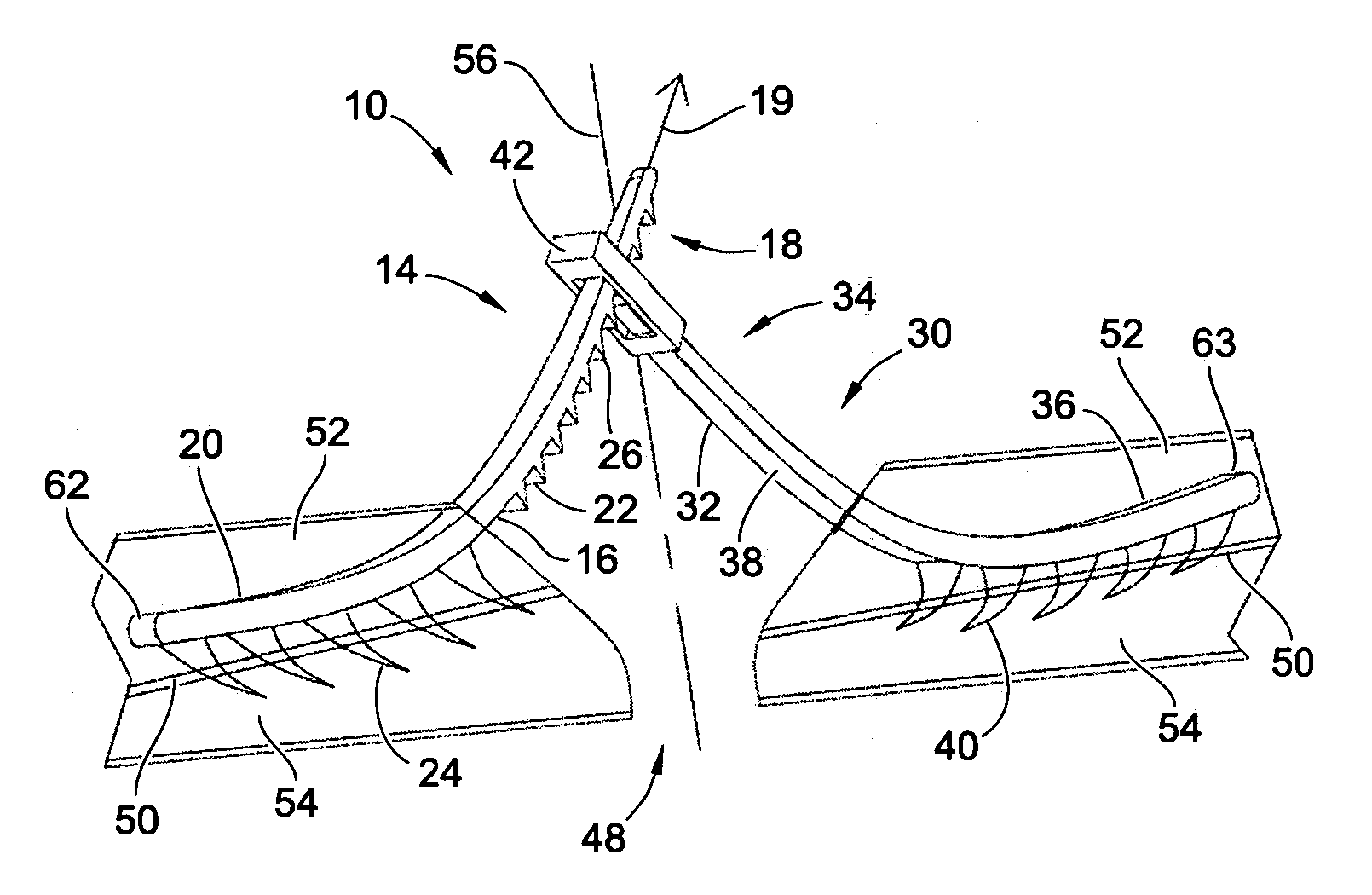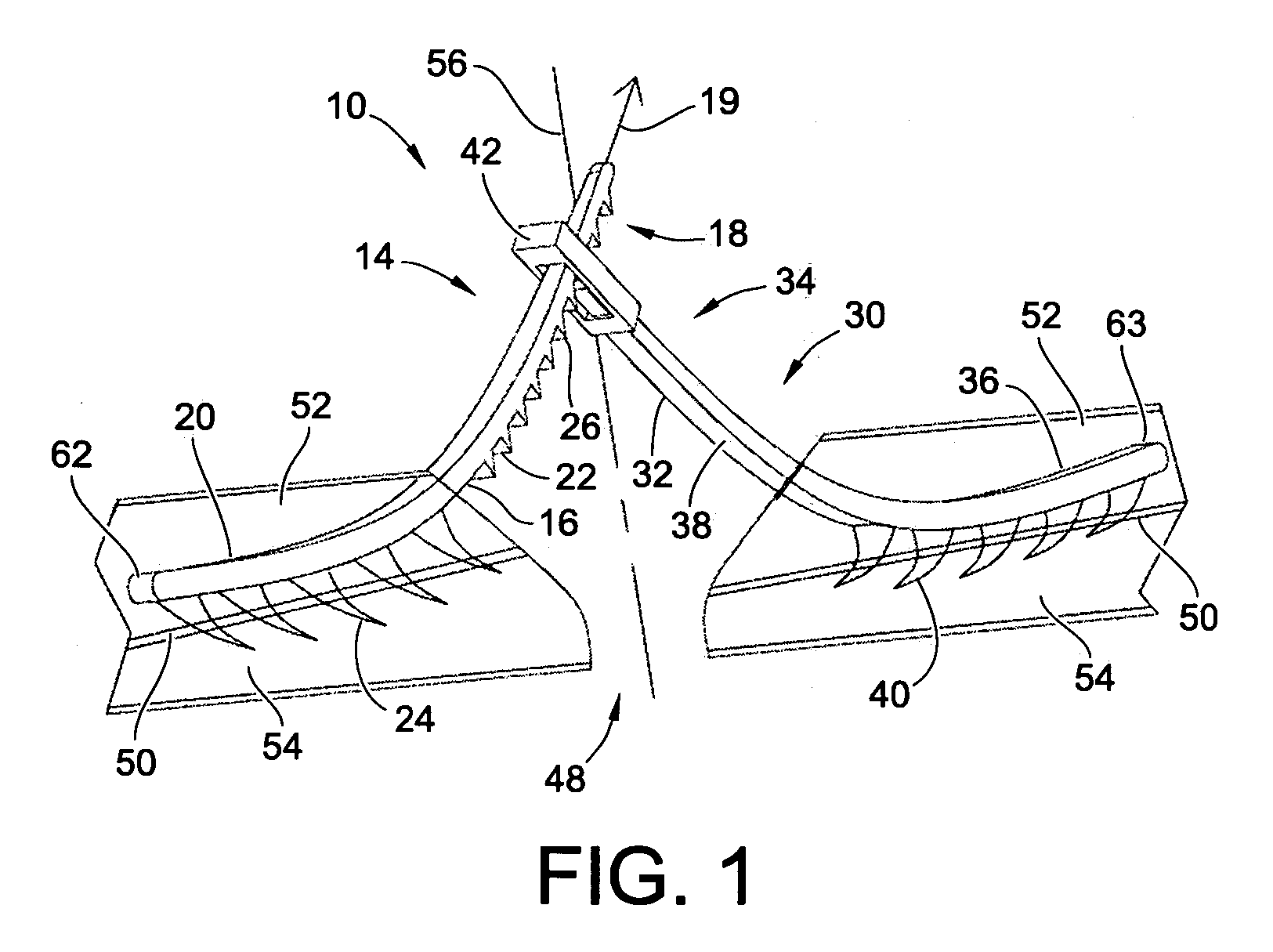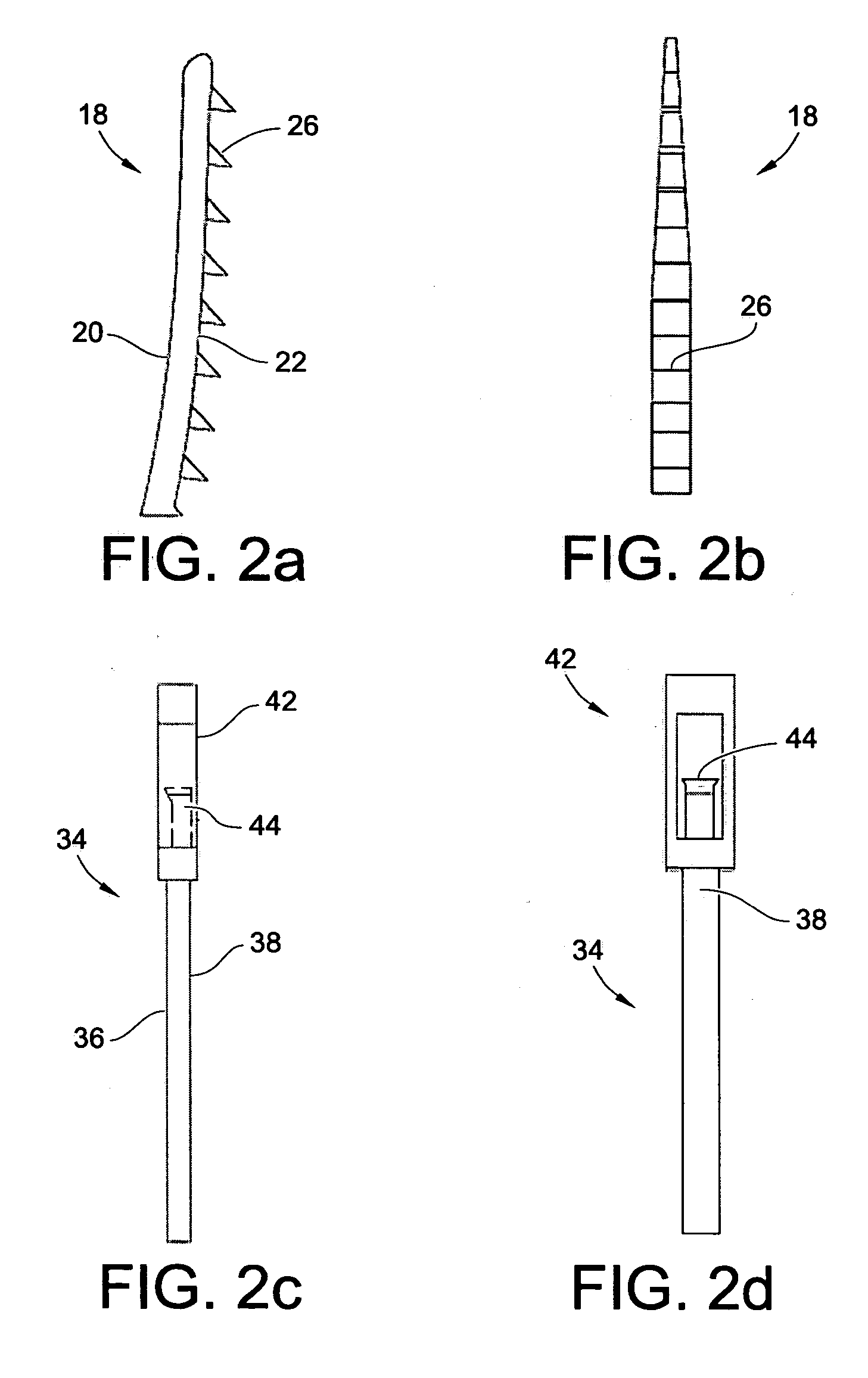Device for surgical repair, closure, and reconstruction
a technology of surgical repair and closure, applied in the field of surgical fasteners and techniques, can solve the problems of increasing the susceptibility of the wound to infection, increasing the skin tear around the stitch, and increasing the scarring along the suture path, so as to facilitate more demanding procedures, save time, and increase the effect of skin incisions
- Summary
- Abstract
- Description
- Claims
- Application Information
AI Technical Summary
Benefits of technology
Problems solved by technology
Method used
Image
Examples
first embodiment
[0057] Referring now to FIG. 1, there is illustrated a perspective view of the disclosed invention 10. As illustrated, the invention 10 includes a first strap 14 and a second strap 30. The first strap 14 and the second strap 30 include distal ends 62 and 63 and proximal ends 18 and 34, respectively. The straps 14 and 30 are planar and made of a pliable material having dorsal surfaces 20 and 36 and a ventral surface 22 and 38. The dorsal surface 20 and 36 of the straps 14 and 30 are smooth while the ventral surfaces 22 and 38 include a plurality of tissue attachment points or small barbs 24 and 40 which project downward from the ventral surface 22 and 38 and curve toward the proximal end 18 and 34. In one preferred embodiment, the straps 14 and 30 have a length of about 4 cm and a width of about 0.5 cm. In other embodiments, the straps 14 and 30 may be larger or smaller to accommodate a wound, illustrated at 48. Although the shape of the straps 14, 30 may include planar sides as illu...
second embodiment
[0070] Reference is now made to FIGS. 4-9 for the invention, which is directed to a wound closure device including a tissue-connecting strap 100 for connecting wound tissue. Advantageously, the tissue-connecting strap 100 can act upon itself thereby eliminating the necessity of mating straps of different configurations. Referring now to FIGS. 4a-f, the tissue-connecting strap 100 is a one-piece unit sectioned into a tissue insertion tongue 102 at the proximal end 106 of the tissue-connecting strap 100 and a forked or U-shaped engagement clasp 104 at the distal end 108 of the tissue-connecting strap 100. The insertion tongue 102 is defined by an upper side 110, which is generally smooth and preferably slightly curved. The lower side 112 is again generally smooth, but is defined by a series of attachment points or barb elements 114 having a base connected to the lower side and a pointed end. Although the figures illustrate ordered rows of barb elements 114 beginning at the distal end ...
third embodiment
[0084] It is within the scope of the third embodiment to use an engagement tool 142 as illustrated in FIGS. 9a and 9b for engagement of the female connector 230 to the tissue-connecting strap 262. Likewise, and as illustrated in FIG. 14, the male connecting strap 200 engages the tissue-connecting strap 262 by similar means as described with respect to FIG. 13.
[0085] It is within the scope of the present invention to eliminate the tissue-connecting and the engagement clasps 208 and 236 of the male connecting strap 200 and female connector 230, respectively, in favor of a molded strap in which the male connecting strap 200 includes the tissue-connecting strap 262 integrally connected thereon and the female connector 230 includes the tissue-connecting strap 262 integrally connected thereon.
[0086] Once the male connecting strap 200 and female connector 230 are placed in the wound tissue, the proximal end 202 of the male connecting strap 200 is urged through the slot 257 in the hinge en...
PUM
 Login to View More
Login to View More Abstract
Description
Claims
Application Information
 Login to View More
Login to View More - R&D
- Intellectual Property
- Life Sciences
- Materials
- Tech Scout
- Unparalleled Data Quality
- Higher Quality Content
- 60% Fewer Hallucinations
Browse by: Latest US Patents, China's latest patents, Technical Efficacy Thesaurus, Application Domain, Technology Topic, Popular Technical Reports.
© 2025 PatSnap. All rights reserved.Legal|Privacy policy|Modern Slavery Act Transparency Statement|Sitemap|About US| Contact US: help@patsnap.com



